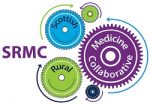Capturing the essence of improvements in remote and rural communities during COVID-19
Rationale:
- We are rapidly developing quick-fixes for long standing temporary problems in our remote and rural practices. e.g. during isolation, members of the community on islands are unable to attend funerals. Cremations need to be carried out on the mainland. Ways of enabling bereaved communities to ‘attend’ virtual funerals have quickly been developed.
- When we have emerged from the containment phase, the likelihood of going back to where we were before may not be the preferred option.
- We should therefore capture the changes to implement and refine long-term, stable solutions for the future.
- Case studies are an efficient way of collating, recording and sharing these stories when activity levels are high to ensure we can learn and continuously improve as opportunities present.
A simple checklist to use when capturing improvements:
- Define the problem / issue – (what is preventing you from carrying out the thing you want to do?)
- What would success look like? (a series of bullet point statements)
- Define any challenges – governance, technical, etc.
- What will the solutions deliver? (a series of bullet point statements)
- If possible – define the outcomes for the future.
- What did you learn? What might you do differently next time? Any surprises?
- Identify the lead person / contact .
- Record of evidence – links, social media, testimonials, video etc.
Developing your improvement:
The template in Annex 1 provides a structure to help you write up your project in a format that will hopefully help others read different case studies and more easily assimilate the information. The headings are there for guidance and can be modified, or not used, depending on what is relevant to your project.
We recognise that you have other priorities and may not have much time to put aside for this, and the SRMC project team are happy to work with you to develop your study.
The following bullet points provide some additional top tips for completing the template:
- Try and keep your improvement short and succinct, with a maximum of two pages long. Additional information can be provided with links to other resources e.g. web-links, documents, spreadsheets etc.
- Please send us any other documents which would be of interest to anybody wanting to develop a similar project e.g. evaluations, data and evidence gathered, patient feedback, job descriptions, checklists or other resources that were developed as part of the project.
- Do not worry about the formatting. Feel free to format and complete your improvement if you can. However, we have attached a simple word document template (Annex 1) that you can populate which contains the different headings. The SRMC project team is happy to help you format the study.
- Feel free to include pictures and graphics. The SRMC project team can work with you to source pictures and graphs to support the improvement.
- Finally, you may find it useful to engage a critical friend. Asking for critical feedback and discussing your work can help distil the important learning points. Members of the SRMC project team are happy to act as critical friends.
- An example is shown below (Annex 2) to help you visualise how a finished improvement might look.
Contact scottish.ruralmed@nhs.net if you would like some help.
SRMC-improvement-template-Annex-2